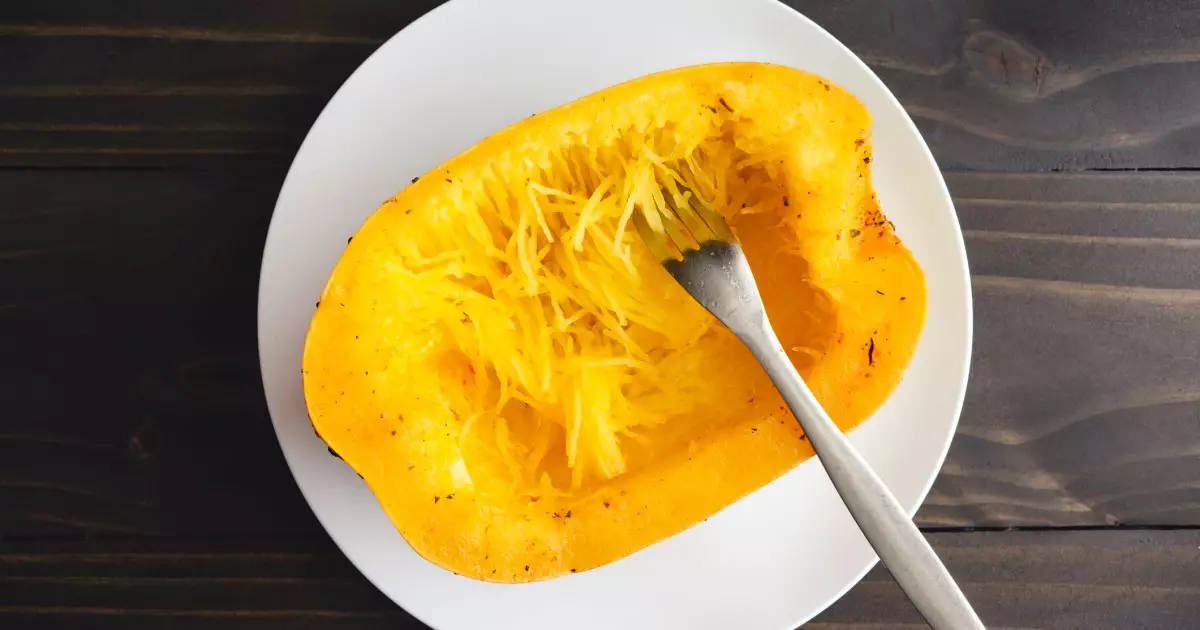As pet owners, we constantly seek out ways to enhance our dogs’ diets, resulting in happier, healthier companions. One innovative option that has garnered attention is spaghetti squash. Beyond its intriguing texture and taste, spaghetti squash offers significant nutritional advantages for our furry friends. The question arises—can dogs eat spaghetti squash? The affirmative answer is grounded in proper preparation, making it an excellent supplement to a dog’s regular meal plan.
Spaghetti squash stands out for its remarkable ability to transform into a delightful carbohydrate alternative, resembling pasta. This unique vegetable not only captivates culinary enthusiasts but is also a superfood in disguise for our canine companions. With its low calories and impressive nutrient profile, integrating spaghetti squash into your dog’s meals could be a game-changer.
Nutritional Powerhouse Packed with Fiber
One of the standout features of spaghetti squash is its fiber content. With over two grams per cup, it serves as a gentle champion for digestive health. The presence of soluble fiber aids dogs in maintaining regular bowel movements, making it an excellent solution for those who might experience constipation. Moreover, a thriving gut flora is essential for overall health, and fiber-rich diets encourage beneficial bacteria growth in the intestines.
In addition to its fiber content, spaghetti squash provides a wealth of vitamins. Particularly impressive is its vitamin B6 concentration, which supports immune function, combats inflammation, and boosts energy metabolism. This is especially beneficial for active dogs that require a nutritious energy source to fuel their daily escapades. Furthermore, the high levels of beta carotene in spaghetti squash can aid in overall eye health, making it a wise addition to any dog’s diet.
Preparation Tips: Making Spaghetti Squash Dog-Friendly
While spaghetti squash is undoubtedly nutritious, it’s crucial to ensure it’s served in a manner that is digestible for dogs. Raw squash can be difficult for their digestive systems, so it should always be cooked before serving. The cooking process not only softens the vegetable but also enhances its digestibility.
To prepare spaghetti squash, start by slicing it in half and removing the seeds. This is an important step, as seeds could pose a choking hazard. Once prepared, roast the squash until fork-tender. The final touch is to scrape the insides with a fork, creating those appealing spaghetti-like strands that dogs and humans alike can enjoy.
However, preparation goes beyond just cooking. Pet owners should avoid using common seasoning ingredients like garlic and onions, which are toxic to dogs. The simple truth is that while garlic-infused pasta dishes delight our taste buds, they are a no-go for our loyal companions. When preparing meals, one can easily set aside some spaghetti squash strands before adding any potentially harmful flavors—an approach that guarantees both safety and shared enjoyment.
Incorporating Spaghetti Squash into Your Dog’s Diet
Adding spaghetti squash to your dog’s diet can be straightforward and enjoyable. Whether as a standalone side, a topping for their regular kibble, or a hidden ingredient in homemade dog treats, there are countless ways to sneak this nutrient-dense vegetable into their meals. The beauty lies in the versatility of spaghetti squash; it can complement various proteins and vegetables, making it a delicious extra on dogs’ plates.
Maintaining a balanced diet is essential for optimal health, so any new additions, including spaghetti squash, should be reviewed with your veterinarian. Regular consultations can ensure that dietary changes align well with your dog’s specific health needs. After all, a vet can provide tailored advice, helping pet owners to address any particular dietary concerns or allergies their dogs may have.
Though the joys of sharing culinary experiences with our pets are immense, safety must always come first. With careful preparation and a keen eye for their ingredients, spaghetti squash can be a delicious and nutritious treat—one that supports your dog’s health while also giving them a taste of the good life. Embracing such wholesome foods in your pet’s diet is a positive step that benefits both the heart and the tail wags of your beloved canine.

